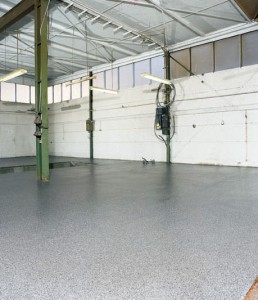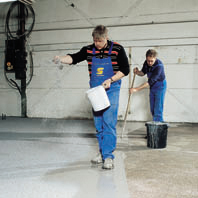Acrylic Impregnated: Where Flooring Becomes A Science
Acrylic Impregnated Application & Meaning
When the floor to be eventually covered with Silikal has pockets in it, or cracks within it, Silikal will utilize a reactive, very low-viscosity resin that will be used to inject and thus impregnate the cracks and pockets. This process is known as acrylic impregnated. The resin is called Silikal R 41 resin, and it is transparent, completely solvent-free and is made up of 2-component methacrylic resin. The reason that they do this is to stabilize the substrate. Occasionally, after this is accomplished the surface may need to be primed. Should the floor be made of composite screeds, the operator will have to be extremely vigilant that the cracks and other empty spaces do not allow the product to seep through to the concrete underneath, and thus might drip into the floor below. This is where experience counts!
Once this area is acrylic impregnated, a hardener must be set with tremendous care given to not make the exact dose neither more nor less than what is suggested for proper curing. The resin itself must be applied as evenly as possible, thus they use either a brush or even a paint roller to put it on. Should there be any kind of matting or anything that is not even, then they rework it all in while it is wet, and prior to any hardening so that the pores can close up properly.
Should the application not be sufficient in order to fill holes and perhaps fill wider cracks, then a product known as SILIKAL® Filler QS 0.2 – 0.6 mm will be well sprinkled. This also has to be accomplished prior to the resin hardening. Finally, Silikal R 41 resin then has to be fully cured prior to any other coats being applied.
All of this is not a common application, but acrylic impregnated is only necessary if the concrete below where the Silikal will eventually be applied has pockets or cracks within it. However, once the Silikal R 41 resin is fully cured, then the “ordinary” portion of applying Silikal will follow since the applicator is now secure that no more holes or other deficiencies will prevent Silikal from working properly.
The Silikal normal application only takes one hour to cure, but if Silikal R 41 resin had to be utilized, the estimator would have covered that with the owner of the property, since it would take longer than the one hour prior to being walked upon, or even ridden upon with an automobile or a fork lift.
Following the curing of Silikal, the life of that product should actually surpass the life of the property the floor has been laid upon. In this manner yet another happy Silikal customer is made.


